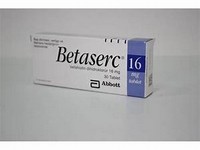Betahistine dihydrochloride
CLINICAL USE
Treatment of vertigo, tinnitus and hearing loss associated with Ménière’s syndrome
DOSE IN NORMAL RENAL FUNCTION
8–16 mg, 3 times a day
PHARMACOKINETICS
DOSE IN RENAL IMPAIRMENT
GFR (mL/MIN)
DOSE IN PATIENTS UNDERGOING RENAL REPLACEMENT THERAPIES
IMPORTANT DRUG INTERACTIONS
Potentially hazardous interactions with other drugsNone known
ADMINISTRATION
Reconstition
–
Route
Oral
Rate of Administration
–
Comments
–
